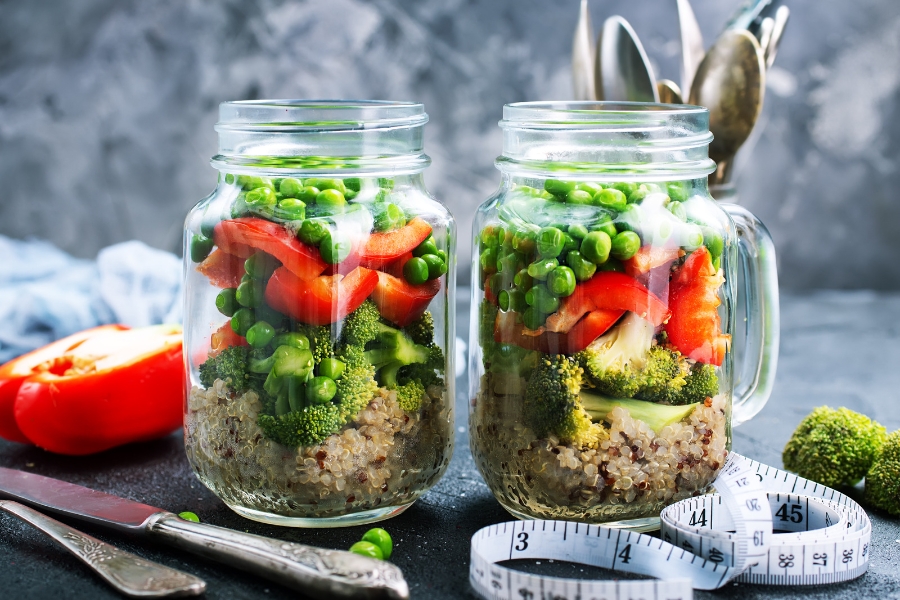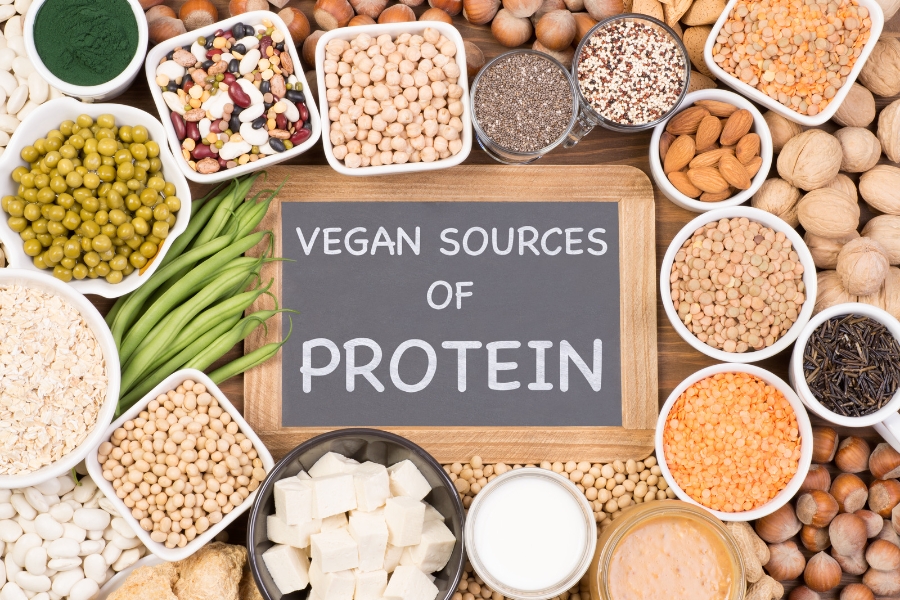
From The Exclusive Collection of FREE Plant-Based Recipes
By Plant-Based Nutrition Professional Chef Susy • Designed For Effortless Weight Loss & Weight Maintenance
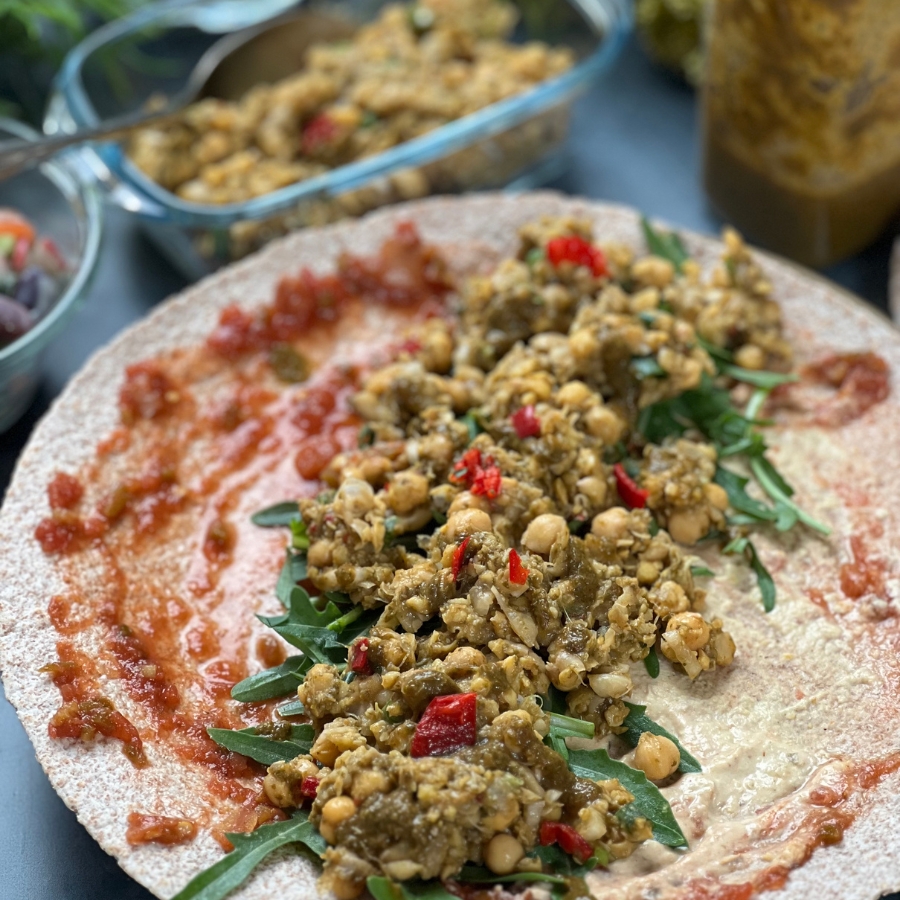
Vegan Papri Chaat (Healthy, Gluten-Free & Easy Recipe)
Level up your lunch game with this 15-minute Vegan Papri Chaat! The recipe is healthy, easy, and prepared with staple ingredients. The best part? It makes sure your body is getting all the right nutrients—from protein and probiotics to the all essential vitamins!

Prep Time: 15 Mins
Total Time: 15 Mins
Servings: Adjustable

Let's Be Friends!

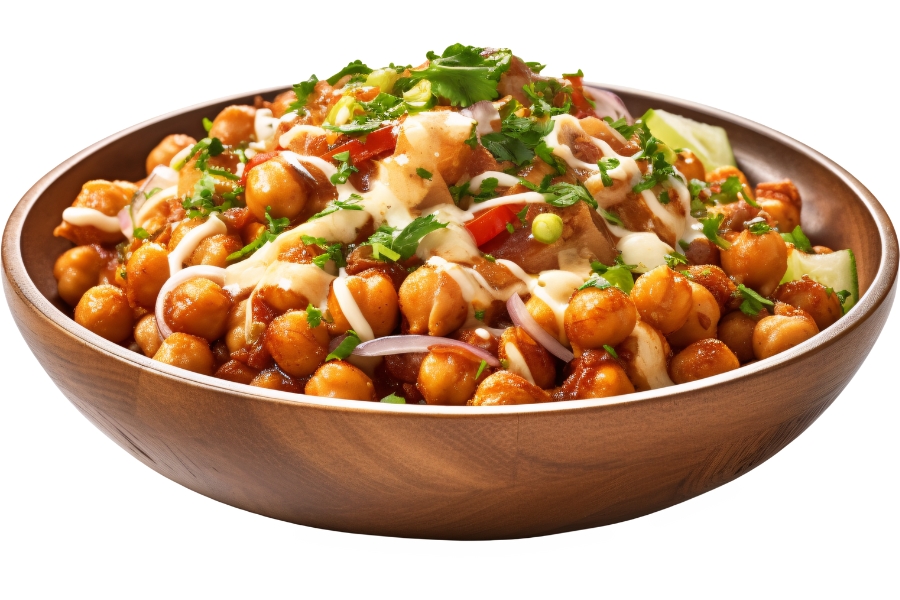
Papri chaat is one of my favourite Indian street food snacks—one that is savoury, nutritious, and super easy to make at home. It is so fulfilling and so tasteful that I sometimes find myself enjoying it as a main dinner course.
Ready to dive into the burst of flavours? Let’s get started!
Table of Contents
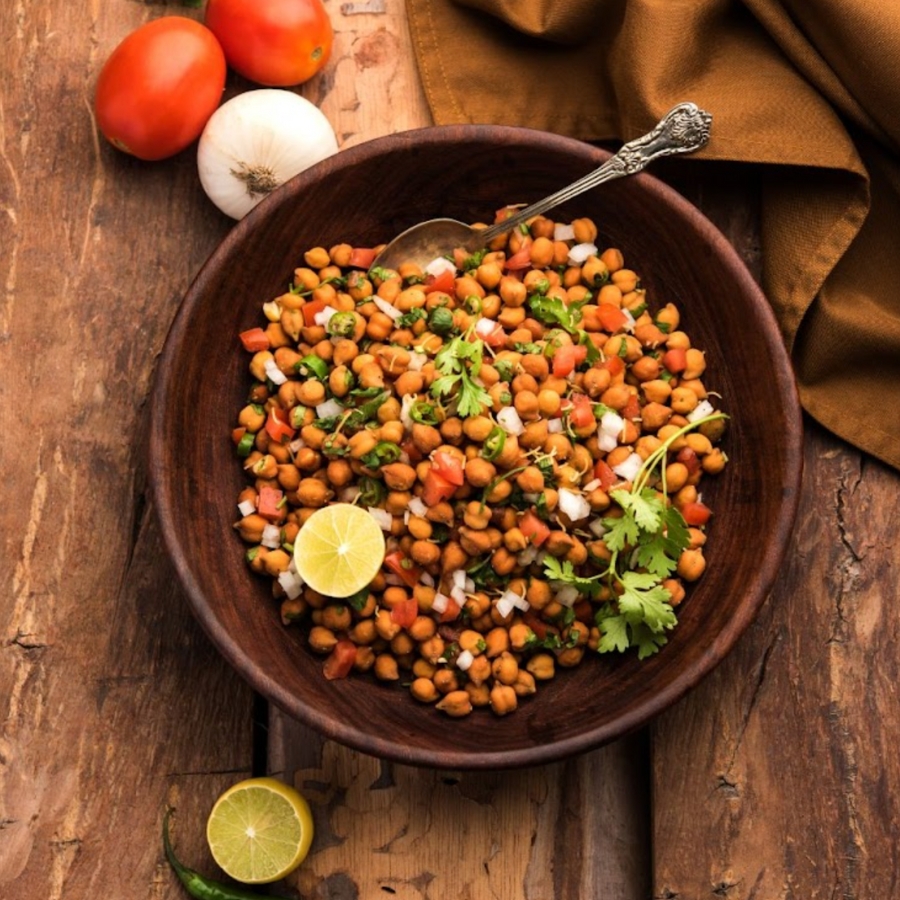
Why This Recipe Works
Delicious Balance of Textures and Aromas
Each ingredient contributes to the flavour profile. The recipe uses rotis or chapatis instead of fried papri to provide a satisfying base without the added fat. The plant-based yogurt dressing adds a cool, creamy element that balances the crunch of the roti and chickpeas. And the combination of fresh coriander (cilantro), mint, and lemon juice creates a vibrant aroma and a burst of freshness in every bite.
100% Vegan Recipe
Like all the vegan recipes on my blog, papri chaat, too, is made without a single animal-based ingredient. The best part? It’s as delicious as the non-vegan alternative, so your friends and family will love it even if they’re not into healthy whole food plant-based diets.
Low-Fat Advantage and Calorie Control
I’ve tried keeping the calorie count as low as possible. Ditched the deep-fried papri to eliminate a major source of unhealthy fat, added vegan yogurt (a low-fat ingredient) to keep you feeling full, and used agave syrup as a sweetener to control the overall sugar content.
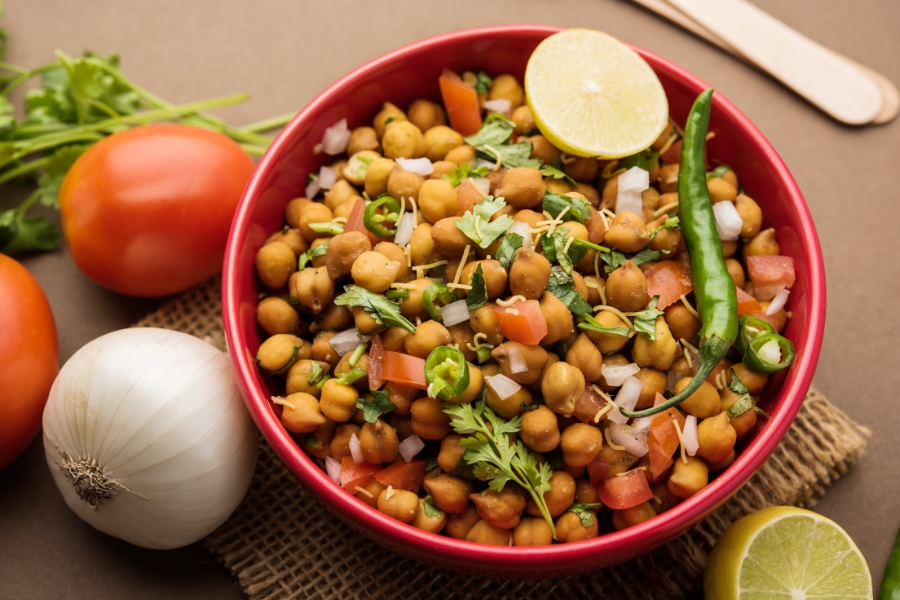
Recipe Ingredient Notes
Chickpeas. Make sure to drain and rinse before using canned chickpeas. For a fresher flavour, soak and cook dried chickpeas from scratch. Lentils or kidney beans can be used for a slightly different flavour profile.
Onion (diced). I add white onion for a sharp bite and pungency—and, of course, for its high vitamin C and antioxidant content. Red onions also work in this recipe, offering a milder alternative. Note: Choose a fresh onion with a firm texture and no green sprouts.
Tamarind paste. You can find this ingredient in the international aisle of the grocery store. It gives the dish a complex depth with a tangy and sweet flavour.
Agave syrup (or maple syrup). The sweetness balances the savoury and tangy elements.
Chaat Masala Mix. The ingredient is basically a unique blend of spices like cumin, coriander, and black pepper. You can either look for pre-made chaat masala mix in Indian grocery stores (or online) or blend ground cumin, coriander (cilantro), black pepper, and a pinch of amchur (dried mango powder) for a homemade replacement.
Black salt (kala namak). You can use regular table salt instead, but you won’t get the authentic eggy aroma of black salt. The flavour profile will be a bit different, too.
Fresh coriander (cilantro) or dried coriander. It gives the vegan papri chaat bright, citrusy notes with a slightly peppery finish. I used fresh coriander with bright green leaves and a fresh aroma. If using dried, store in an airtight container in a cool, dark place.
Fresh mint or dried mint. You can either sprinkle this as a topping or mix it in a plant-based yogurt before adding it to the papri chaat.
Lemon juice (freshly squeezed). This is the magical ingredient that makes all the other flavours pop.
Chilli (fresh or dried). You can level up or tone down the heat level, based on your preference. Fresh chillies, for example, will add a brighter flavour compared to dried ones.
Garlic clove. I added a clove of minced garlic and mixed it well to thoroughly spread out the savoury flavour. You can replace it with garlic chutney (a blend of garlic, green chilli, a small amount of coriander, and lemon juice).
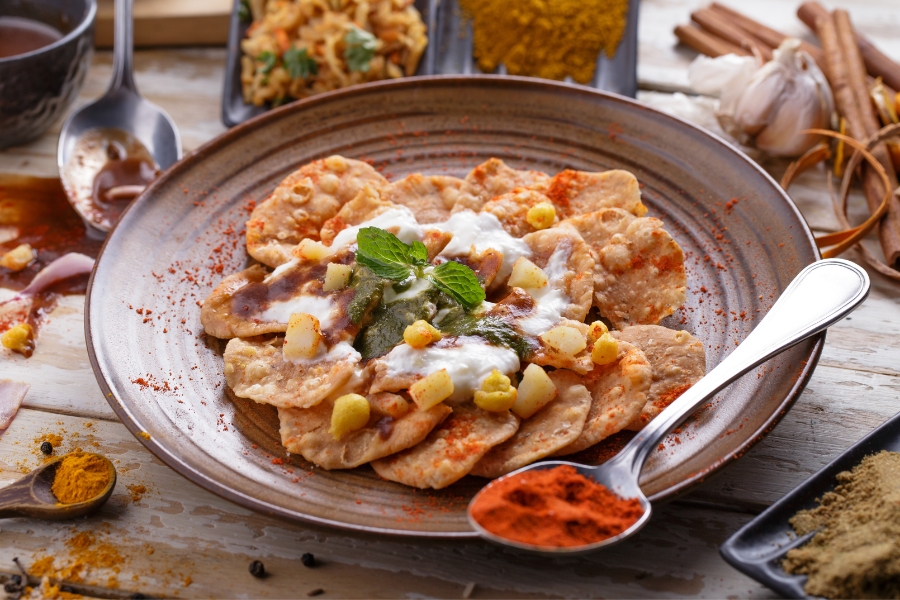
Vegan Yogurt Dressing
Plant-based yogurt, a protein and probiotic powerhouse, is the primary nutrient source of the dish. It fuels your body with all the essential elements, binds together the rest of the ingredients, and adds a creamy tang to the dish.
Note: Look for low-fat, plant-based yogurt to keep the papri chaat low-calorie and dairy-free.
Here’s what else you need for your vegan yogurt dressing.
Black salt (kala namak)
Lemon juice (freshly squeezed)
Agave syrup (or maple syrup)
Rotis or chapatis or any gluten-free flatbreads. They provide a base for the toppings—offering a wheaty and slightly chewy texture. You can make your own rotis/chapatis using whole wheat flour or try my naturally gluten-free dosa recipe using gram flour, my lentil flatbread recipe, or use any store-bought gluten-free flatbreads.
Mixed green salad (optional). It will add a refreshing counterpoint to the richness of the dish and provide additional vitamins and minerals. For an exciting twist, try something like a Mexican Mango Salad.
Spring onions (scallions). I use spring onions with firm white and green parts. They give my plant-based papri chaat a mild oniony bite and freshness—and, not to forget, some extra vitamin C, vitamin A, and vitamin K.
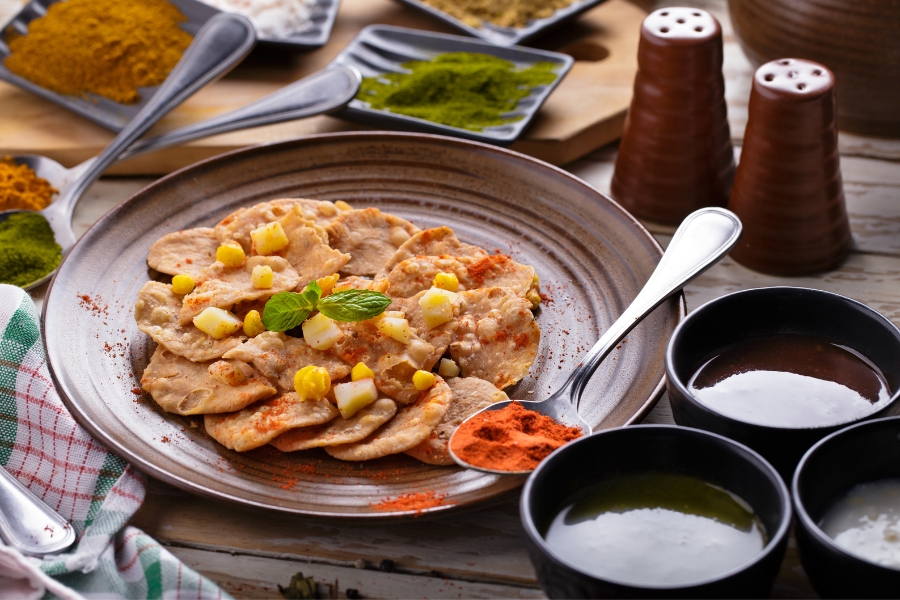
How To Make Vegan Papri Chaat
New to home-made Indian foods? No problem, this recipe makes it simple.
Prepare the tamarind sauce. In a bowl, combine the tamarind paste, agave syrup, chaat masala, and black salt. Mix well and set aside.
Make the herb chutney. Using a pestle and mortar or a small food processor, blend together the coriander (cilantro) leaves, mint leaves, lemon juice, chilli pepper, and garlic clove until a smooth paste forms.
Combine the flavour base. In a large bowl, combine the chickpeas and diced onion. Add the tamarind sauce and herb chutney. Mix well to coat the chickpeas evenly.
Assemble your plant-based papri chaat. Layer a roti or chapati or a gluten-free flatbread of choice on a plate. Top with the chickpea mixture.
Prepare the vegan yogurt dressing. In a separate bowl, whisk together your plant-based yogurt of choice, black salt, lemon juice, and agave syrup. Drizzle a generous amount of yogurt dressing over the chickpea mixture.
The finishing touch. Garnish your papri chaat with chopped spring onions (scallions). If using, add a bed of mixed greens for a refreshing touch.
Dig in and enjoy the explosion of flavours! Serve with delicious drinks like a green smoothie or a dreamy vegan mango lassi.
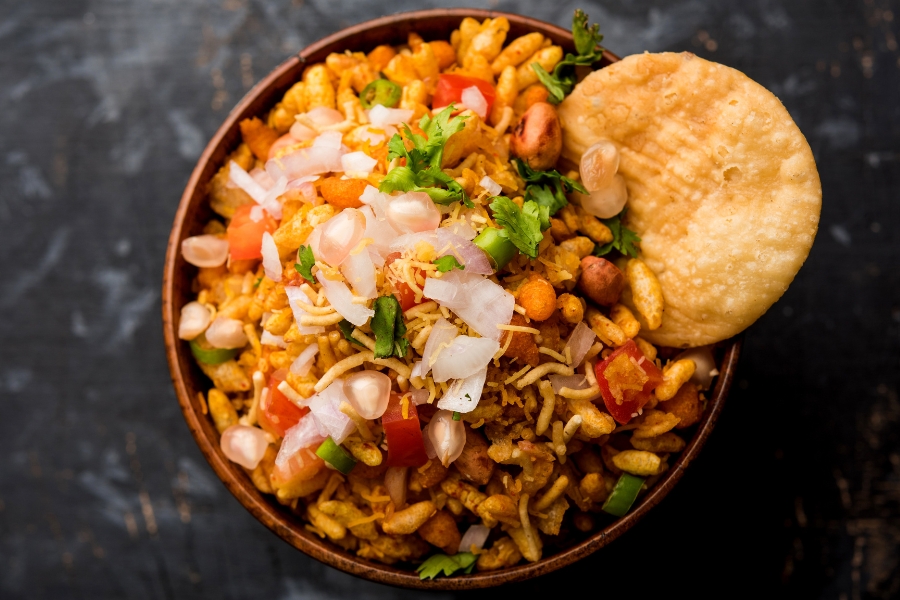
Variations, Ideas & Notes
Any flatbreads can work as a base for your papri chaat: Think parathas, pittas, and tortillas, to name a few.
Use lettuce wraps or large bell peppers instead of rotis/chapatis for another gluten-free option.
If you can't find tamarind paste, a mixture of brown sugar, lime juice, and water can be used in a pinch.
Experiment with different sweeteners like vegan honey or date syrup to adjust the sweetness level.
Replace the chilli pepper with a pinch of red pepper flakes for a milder taste.
Add parsley instead of cilantro.
Go for finely chopped shallots for a sweeter alternative to onions.
Add-ons
Top your chaat with chopped nuts (cashews, peanuts) for added texture.
Dollop a spoonful of coconut chutney or vegan raita (yogurt-based dip) for a richer and creamier experience.
Add chopped tomatoes, cucumber, or shredded carrots for a refreshing touch.
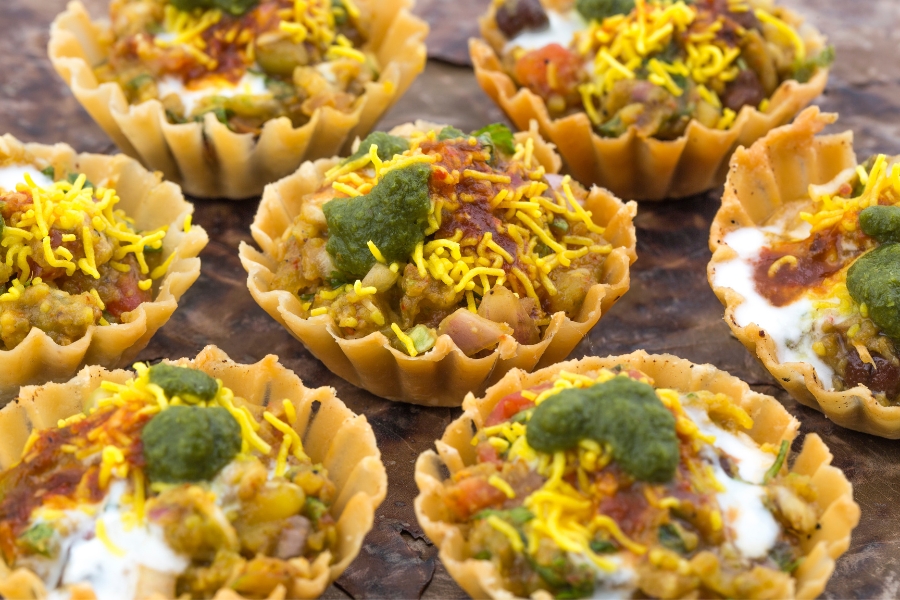
Pro Tips For The Vegan Papri Chaat Recipe
Unlike dips you might scoop, papri chaat chutneys should be pourable, i.e. on the thinner side. They should easily be able to coat all the ingredients. For example, if tamarind is a thick paste, add a little water to fix the consistency.
Vegan yogurt should be batter-like—whisked and thinned. Also, make sure to use chilled yogurt for a refreshing touch.
If you don't have fresh herbs, you can substitute 1 tablespoon each of dried coriander and mint leaves.
To enjoy the best results, serve the papri chaat fresh. Avoid leaving it out for too long, as it becomes soggy.
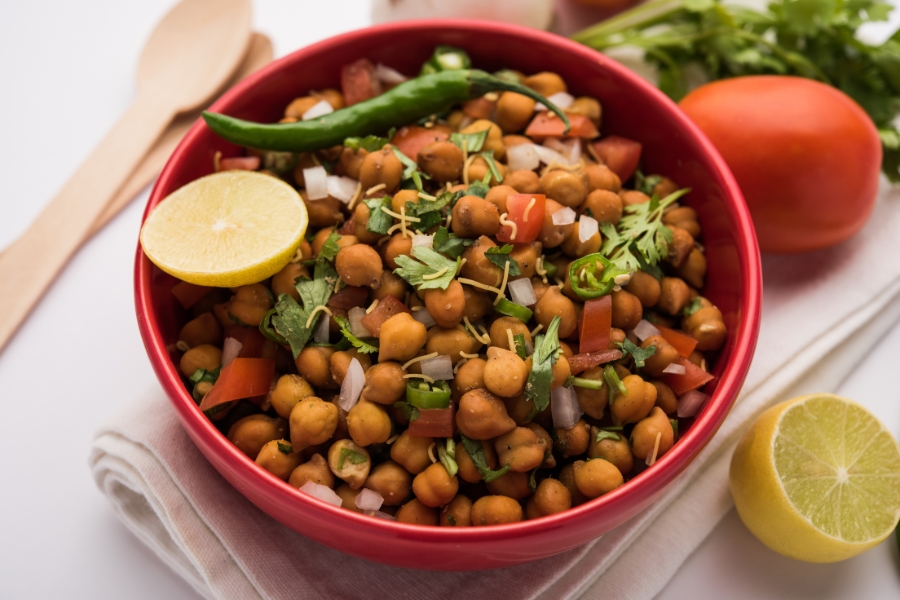
Frequently Asked Questions
What can I use instead of roti for a gluten-free version?
You can use gluten-free flatbreads, lentil crackers, or homemade gram flour dosa.
Is tamarind paste necessary?
Tamarind adds a tangy depth, but you can substitute it with lemon juice or pomegranate molasses.
Can I prepare vegan papri chaat in advance?
Yes! Keep the ingredients separate and assemble just before serving to maintain crispness.
Can I meal prep plant-based papri chaat in advance?
Absolutely. Simply boil the potatoes and chickpeas and prepare the chutneys. For coriander (cilantro) chutney, I’d recommend keeping it as fresh as possible. Prepare it only a day or two in advance.
The sweet tamarind chutney can be stored in the fridge for up to 1 month, so you can make that a bit earlier. Chop the rest of the ingredients and prepare the yoghurt dressing right before preparing the chaat.
Once you have all the elements ready, it will take no more than 10 minutes to bring the plant-based papri chaat to the table!
Is vegan papri chaat healthy?
Yes, vegan papri chaat is a super-healthy and clean, whole food plant-based option.
The no-oil recipe, paired with the nutrient-dense ingredients, makes the chaat a perfect choice for folks on a weight loss journey—or for someone simply wanting a light but nutritious snack.
Final Words
Serve it as a salad, a side dish, or a main course, vegan papri chaat is sure to be to star of your dining table—test it for yourself today!
If You Like This Recipe, You Might Also Like…
If you made the recipe, make sure to tag me on Instagram @vegan.susy
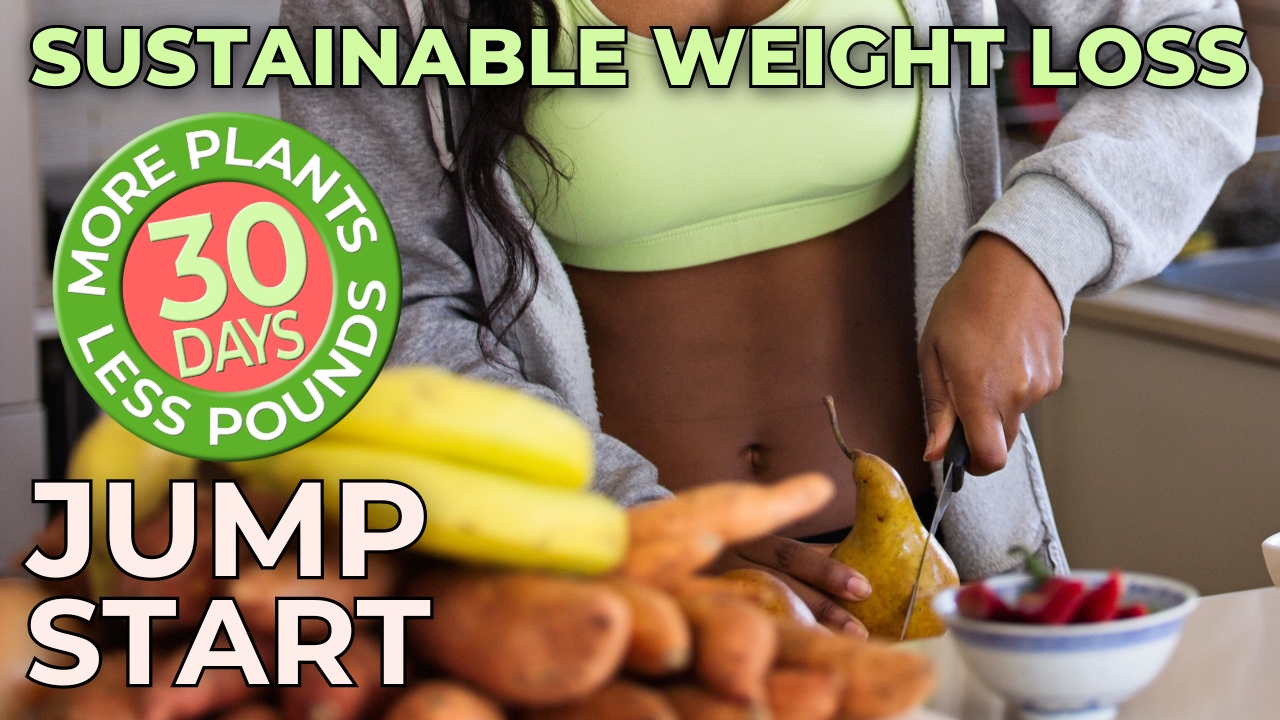
More Free Resources
Unlock Your Transformation Today!
Empower Yourself: Embark on a Delicious Fat Loss Adventure

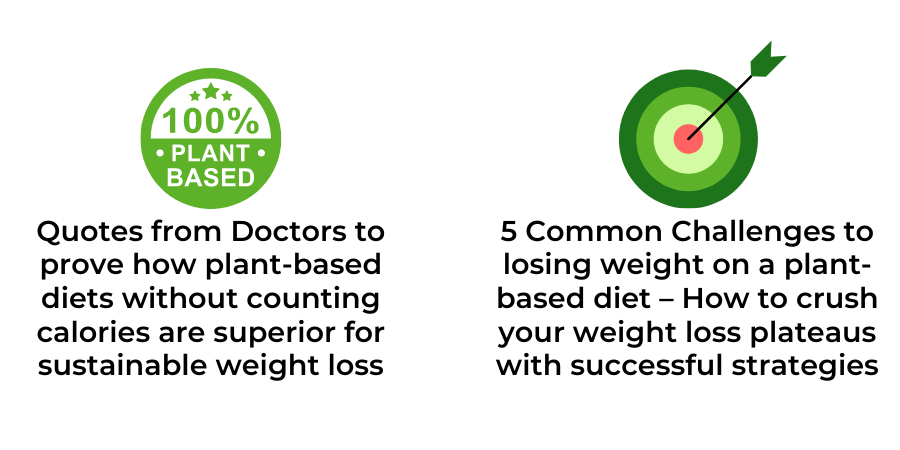

🍉 Get Ready to Jump Start Your Fitness Goals AND DISCOVER A HEALTHIER YOU!
🍉 Let's Make Your Fat Loss & Optimum Health Journey a Delicious Success Story!
🍉 Get The FREE Sustainable Weight Loss Companion eBook and CHEAT SHEETS!
© 2025 VeganSusy Ltd. All Rights Reserved







